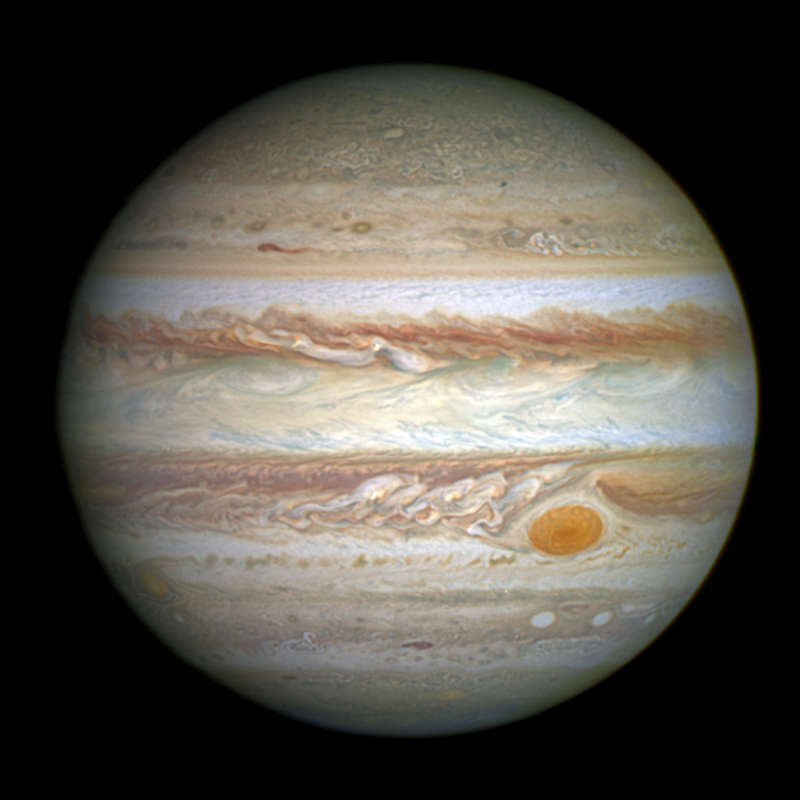Hubble s Jupiter and Shrinking Great Red Spot

Explanation:
Gas
giant Jupiter is the solar system's
largest world with about 320 times the mass
of planet Earth.
It's also known for a giant swirling storm system,
the
Great
Red Spot, featured in this
sharp Hubble image from April 21.
Nestled between Jupiter-girdling cloud bands, the Great Red Spot
itself could still easily swallow Earth, but lately it has
been shrinking.
The
most recent Hubble observations measure the spot to be
about 10,250 miles (16,500 kilometers) across.
That's the smallest ever measured by Hubble
and particularly dramatic when compared to 14,500 miles measured by
the Voyager 1
and 2 flybys in 1979, and historic telescopic observations
from the 1800s indicating a width of about 25,500 miles on its long
axis.
Current indications are that the rate of shrinking is increasing for the
long-lived Great Red Spot.
Authors & editors:
Robert Nemiroff
(MTU) &
Jerry Bonnell
(USRA)
NASA Web Site Statements, Warnings,
and Disclaimers
NASA Official: Jay Norris.
Specific
rights apply.
A service of:
LHEA at
NASA /
GSFC
& Michigan Tech. U.

